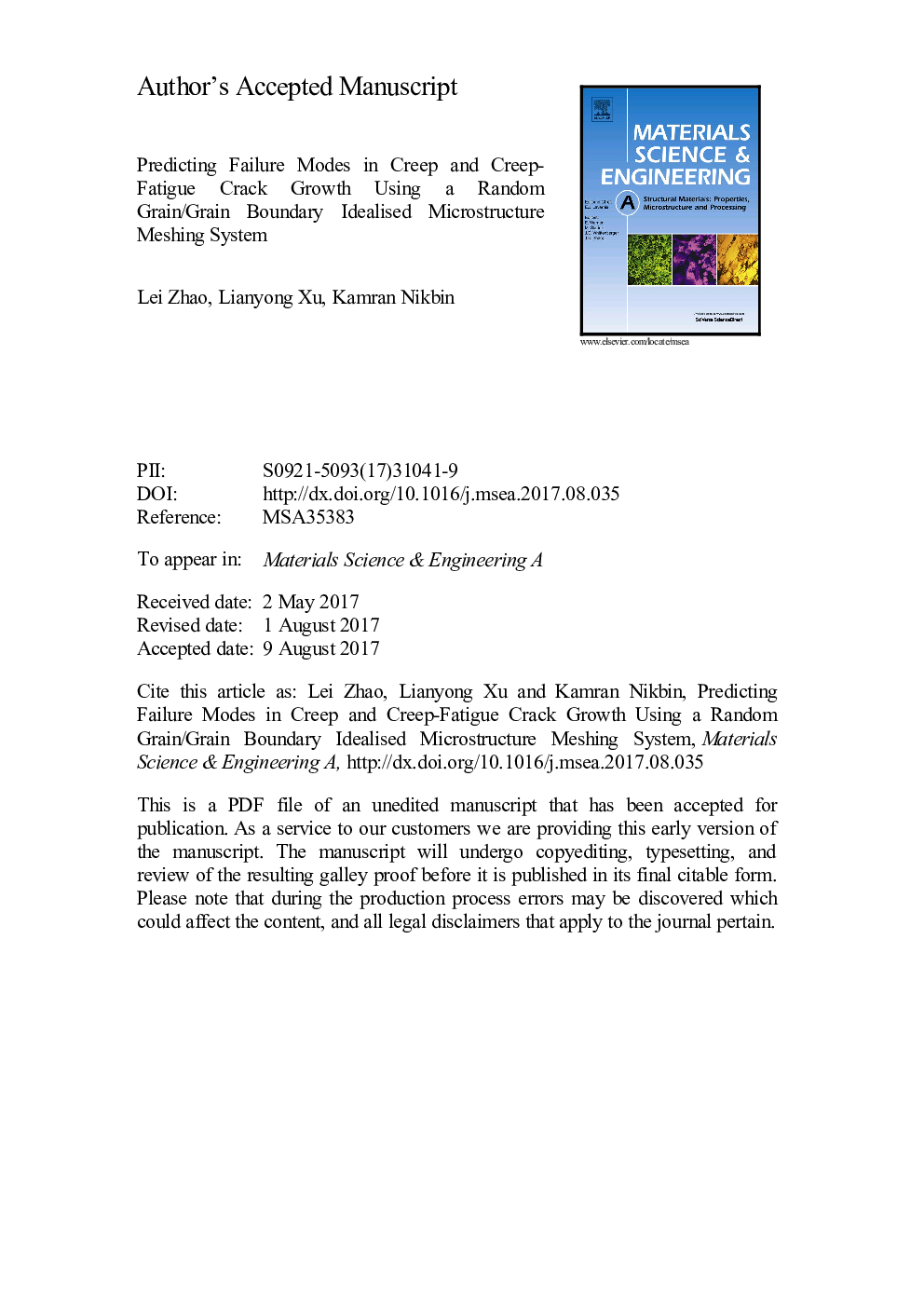| Article ID | Journal | Published Year | Pages | File Type |
|---|---|---|---|---|
| 5455586 | Materials Science and Engineering: A | 2017 | 48 Pages |
Abstract
An idealised microstructure mesh model combined with a novel creep and creep-fatigue damage accumulation model was employed to simulate crack growth behaviour under creep/fatigue conditions for a modified 9Cr-1Mo steel. The influence of microstructures on the crack growth behaviour was studied using a random grains separated by idealised grain boundaries. For accurately representing the damage accumulation in creep-fatigue regime, a non-linear damage model was employed. In this case, creep damage was determined by multiaxial ductility exhaustion approach and fatigue damage was reliant on maximum stress and plastic range ahead of crack tip per loading cycle. When creep dominated, cracks mainly propagated along grain boundaries in steady crack growth stage. As an exception, the crack growth in the tertiary crack growth stage gradually changed from intergranular to mixed model and finally transgranular fracture. In contrast, in creep-fatigue regime, the crack growth behaviour was greatly reliant on the dwell time. For short duration period, the crack mainly propagated in a transgranular manner. But as the dwell time increased to greater than 600Â s, the creep intergranular fracture dominated once again. Furthermore, the grain size gradient had little influence on the crack growth model and only affected the fracture life in creep and creep-fatigue regimes.
Related Topics
Physical Sciences and Engineering
Materials Science
Materials Science (General)
Authors
Lei Zhao, Lianyong Xu, Kamran Nikbin,
